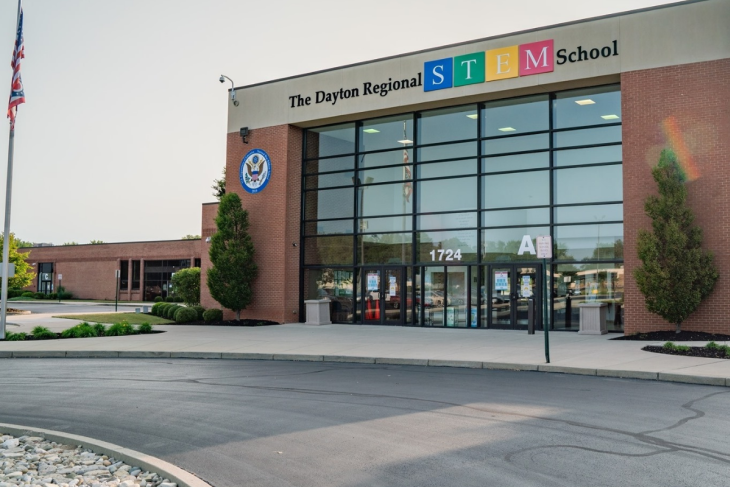NOTE: The Thomas B. Fordham Institute occasionally publishes guest commentaries on its blogs. The views expressed by guest authors do not necessarily reflect those of Fordham.
As Ohio policymakers continue to debate House Bill 1, legislation to reform the way the state funds schools, it is important that they continue to work to ensure the bill achieves its stated intent: to create a fairer and more equitable funding model for all of Ohio’s students. There is no doubt this is a gigantic undertaking. Unfortunately, as currently written, this legislation falls short of the mark in terms of funding Ohio’s seven public independent STEM schools.
The value and importance of STEM education cannot be understated. Members of the 127th General Assembly had the foresight to include a provision in the biennium budget that authorized the creation of public independent STEM schools, tasking them with developing and using innovative and transformative instructional methods with an emphasis on Science, Technology, Engineering, and Math (STEM). The schools were created, in part, to be research and development labs for education in Ohio, and to be incubators of STEM talent across the state to meet Ohio’s evolving workforce demand. Independent STEM schools have risen to the challenge.
Since that time, technology has become even more engrained in our everyday lives. Ohio’s public independent STEM schools actively engage students in the learning process and teach students how to learn. Each classroom is essentially a learning lab.
As the name implies, independent STEM schools operate outside of school districts. This allows the schools to not only be more agile with the programs they offer, but also permits them to accept students from a larger geographical region. While each school is unique, they all collaborate with local businesses, governments, and academic institutes to ensure the curriculum is meeting the needs of today’s workforce. Lessons at these schools focus on skill mastery and problem-based learning, again to actively engage students in their education. Additionally, independent STEM schools expose students to the career possibilities and prepare students for the industries of the future.
The successes of these schools are evident in many ways. Ohio’s independent STEM schools post a cumulative 100 percent graduation rate and have high rates of students who pursue STEM fields post-graduation. Demand far exceeds our capacity. Educators, businesses, and elected officials across Ohio and the country are interested in learning how to replicate our programs. Students, parents, and alumni testify to the difference their schools have made. Moreover, Ohio’s independent STEM schools take an innovative approach to education, and their successes don’t just benefit the students and families that attend them. We’re always happy to share best practices and provide training to educators across the state and nation. The ultimate goal is to see all students succeed.
While providing quality and innovative STEM education is still important to preparing students for the emerging workforce, independent STEM schools need equitable and sustainable funding to build on these successes. Unfortunately, House Bill 1, as written, does not accomplish that for Ohio’s independent STEM schools. Since the inception of independent STEM schools, they have had the lowest per-pupil foundation funding of any educational model, including traditional public, career-technical, and charter schools. In fiscal year 2019, the average per-pupil expenditure of $12,473 in traditional public schools was dramatically higher than the average expenditure of only $7,927 per student for independent STEM schools. Contrary to the goal of creating equitable funding for all students, House Bill 1 establishes a framework for school funding that would continue to promote inadequate funding for independent STEM schools. In fact, HB 1 proposes to fund public charter schools and independent STEM schools at 90 percent of their traditional school counterparts. This does not create equity, but continues to underfund innovative, high-quality, high-demand public school choice. Under the proposed funding model, independent STEM schools are projected to see a slight increase. But by building a reduced funding percentage into the framework, independent public STEM schools will never be fully funded, and will likely see the gap continue to widen.
Furthermore, independent STEM schools, by designation, emphasize personalized learning and real-life experiences and exposure to the workforce and emerging careers. Schools provide pathways in a variety of innovative fields like engineering, health, agriculture, and more. Each classroom is essentially a lab, and our teachers have deep knowledge and experience in these areas. The unique mission and fundamental requirements of independent STEM schools should be funded differently. The proposed funding increase in this bill falls short of the additional funding independent STEM schools need to support their robust career-exploratory programs designed to inspire and prepare future STEM professionals.
Over the years, Ohio’s independent STEM schools have used every process at their disposal to tap existing funds and reduce costs. They have leveraged community partnerships and built the curricula and programs to qualify for weighted funding through career-technical education. This has all been done while protecting and preserving the educational model. Regardless of how fiscally conservative they are, independent STEM schools are facing fiscal cliffs, and both current funding and that proposed in House Bill 1 are inadequate to allow them to continue to fulfill their mission as education incubators.
As the General Assembly continues to debate HB 1, members should ensure an equitable and sustainable funding model for independent STEM schools. This will allow these schools to continue fulfilling the mission they were tasked with in 2007. Innovation will be key to rebuilding Ohio’s economy after Covid-19. Independent STEM schools will be an integral part of that solution.
Meka N. Pace is the president of the Ohio Alliance of Independent STEM Schools.




